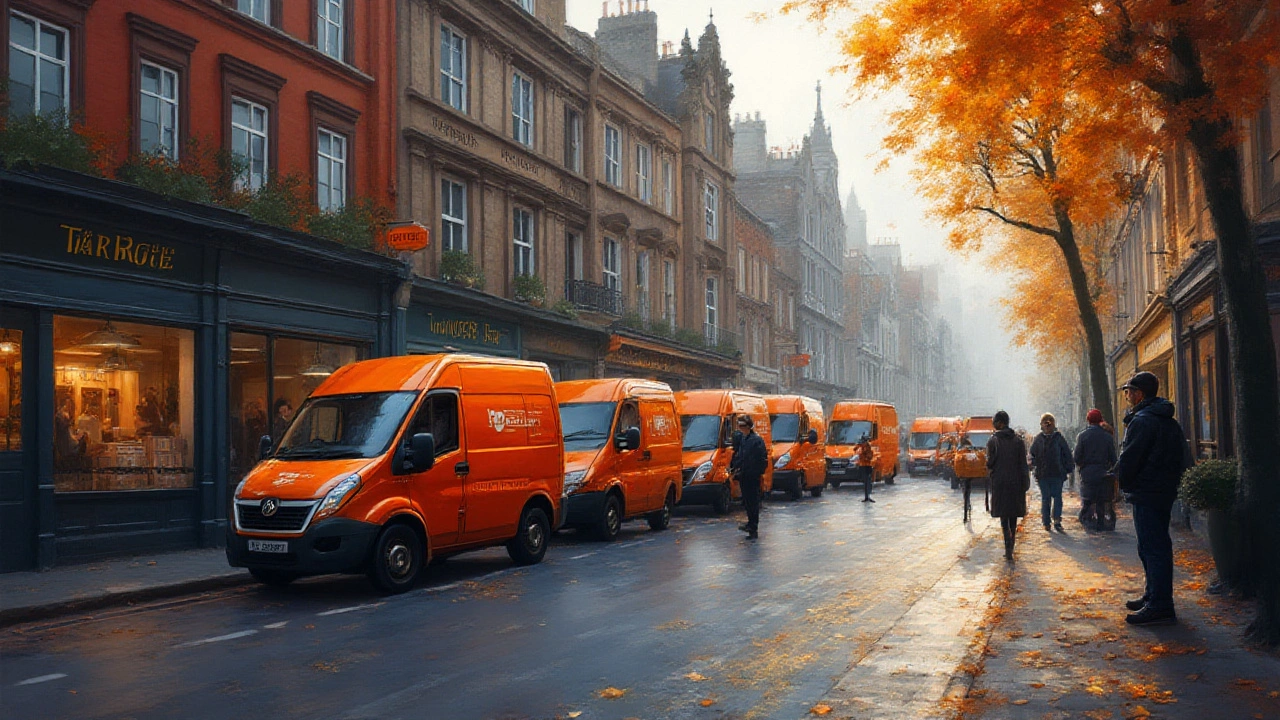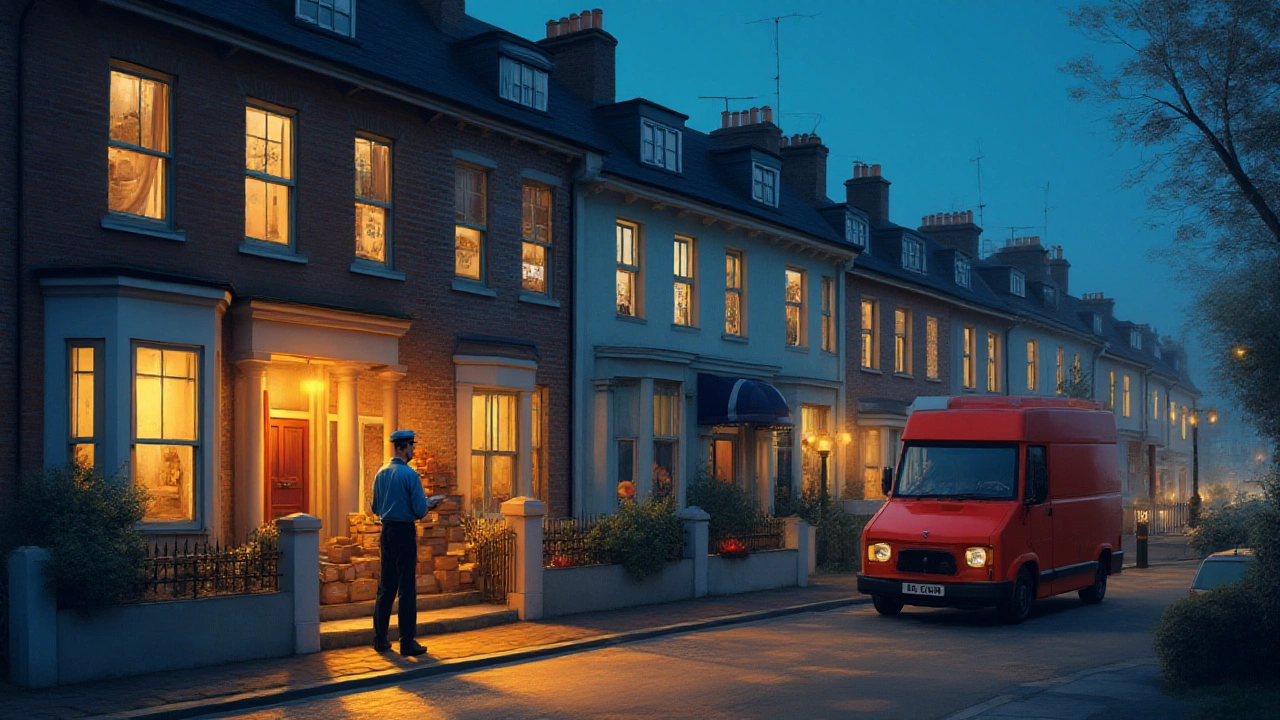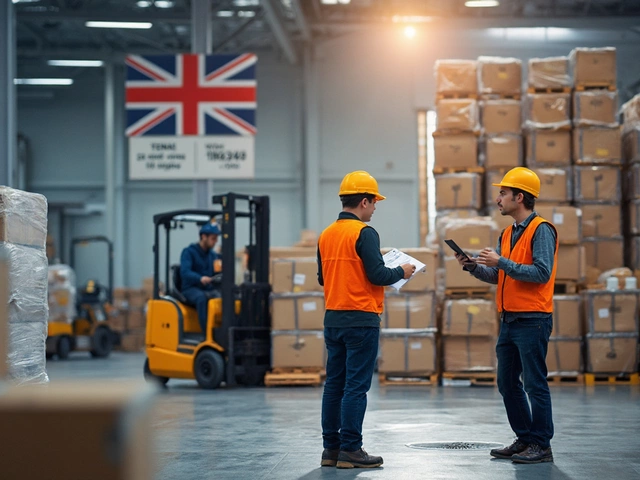If you’ve ever paced around the house, nervously peering out the window as the sun dips low, package tracker glued to your hand, you know the sweet anticipation—and agony—of waiting for a courier. We live in a world where next-day delivery feels like a basic human right, and yet the answer to one simple question can shape an entire day: what time do couriers actually stop delivering? The answer isn’t as straightforward as you’d hope, but understanding the factors in play—from local traffic snarls in Auckland to Friday’s rush of online shopping—can save you from frustration and help you plan smarter for future deliveries.
Standard Delivery Cut-Off Times for Major Couriers
Every courier company sets its own delivery schedule, but most have a familiar window when they ring your bell or drop a package at the door. In New Zealand, the big names—NZ Post, CourierPost, Aramex, and DHL—usually keep business hours at the heart of their routines. Standard residential deliveries typically happen Monday to Friday, somewhere between 7:00 AM and 6:00 PM. Offices tend to see the courier van anytime up to 5:00 PM, synced with working hours. But it’s not that neatly boxed.
Let’s break down the biggest players. NZ Post and CourierPost, for example, see the bulk of their packages delivered before 5:00 PM in urban areas and by 6:00 PM for rural spots. Saturday delivery is a paid extra, not the default—though it’s increasingly common, thanks to the rise of online shopping. DHL, with its focus on international parcels, calls itself done by 6:00 PM too, but time zone math can shift this, especially as flights land at odd hours. Aramex (previously Fastway), which handles a heap of eCommerce parcels, is most active from 8:00 AM to 5:00 PM, sometimes creeping later when holiday volumes spike.
Here’s the thing: drivers don’t always finish their routes at the same hour. If you’re near the start of a run, expect that knock before lunch. But if you’re last on their GPS route, you could see the van well after dark, especially in December. In Auckland, peak periods can see “final mile” deliveries stretching to 7:00 PM or a touch later after major sales events.
Here’s a quick table showing official standard delivery hours for popular New Zealand couriers:
| Courier | Standard Delivery Hours (Weekdays) | Extended/Late Delivery Periods |
|---|---|---|
| NZ Post / CourierPost | 7:00 AM – 6:00 PM | Up to 7:30 PM in peak season |
| Aramex (Fastway) | 8:00 AM – 5:00 PM | Up to 6:30 PM during busy events |
| DHL Express | 8:00 AM – 6:00 PM | Rarely later except for urgent deliveries |
| Toll | 7:00 AM – 5:00 PM | Tends to stick to business hours |
While those hours are a reliable guideline, actual end-of-day deliveries can sneak outside that range if the driver faces traffic jams, unpredictable weather, or complicated stops. Most companies have a firm policy that if your package isn’t there by 7:00 PM, it’ll roll over for delivery the next working day.
What Influences Delivery Time? It’s Not Just the Courier
If you’ve ever wondered why your mate across town gets their new shoes before midday but your parcel turns up at sunset, you’re not imagining things. Courier schedules aren’t set in stone. Several moving parts play a role in whether your delivery is early-bird or late-owl.
- Route Planning: Drivers follow a carefully planned loop. Factors like the number of packages, driver experience, and urban layout make each day a little different. In densely populated Auckland neighborhoods—think Mount Eden or Grey Lynn—the sheer number of stops can delay things.
- Weather and Traffic: Downpours, floods, or road closures can turn a well-oiled courier route into chaos. The storm that rattled us last month added hours to Whiskers’ cat food delivery. Traffic on SH1? Don’t get me started.
- Volume Surges: Fridays, holidays, and shopping events like Black Friday or Matariki bring parcel avalanches. Couriers may work later, add temp drivers, or shift less-urgent packages to the next day.
- Rural vs. Urban: Living out of town? Prepare for different rules. Rural deliveries usually come later in the day, sometimes bundled with mail. There just aren’t enough couriers to reach every farm by lunch.
- Service Levels and Upgrades: Paid for express or "signature required" delivery? Couriers will prioritize your item, and you’ll usually get your package earlier, but not always. If it’s a big-ticket item or fragile delivery, expect a call ahead.
One not-so-obvious tip: if you live in an apartment or townhouse complex, packages can take longer due to multiple units and extra security steps. Couriers sometimes need access codes or signatures, which can lead to delays. If you haven’t updated your details with the retailer, your order could go a few rounds before finding your front door.

How to Track Deliveries and Work with Courier Schedules
The days of mystery deliveries are behind us—mostly. Every courier now leans hard into digital tracking. You’ll get a tracking code right after shipping, with real-time updates showing if your package is on the driver’s van or stuck in a depot. Still, these aren’t always as live as you’d hope. Some update every hour, others only at key milestones. The trick is to refresh tracking after 9:00 AM, when vans are typically loaded and out on their first stretch. If a driver plans a late drop-off, your package’s status will often read "on vehicle for delivery today" right up to the last run.
Some courier apps and smart home devices let you set delivery preferences. Redirect to a pick-up locker. Request a doorstep drop if you’ll be out (though that’s not always available for high-value goods). You can even get text alerts when the driver is within a kilometer or two, which is a game-changer for anyone trying to wrangle pets, kids, and work-from-home calls. Whiskers once tripped a driver who tried to ninja his way to our porch—text notice spared us both the surprise the next time.
If you absolutely need a delivery by a certain hour, don’t trust “end of day” promises. Instead, call the courier’s local office around mid-morning with your tracking number. They can often give a delivery window. And for those who keep missing their deliveries, getting familiar with the "missed delivery card" process is worth it. NZ Post, for example, lets you reschedule or redirect to a local collection point at no extra charge in many urban areas.
Just remember: couriers aren’t mind readers. Clear delivery instructions go a long way—especially if your address is tricky. And if you’re dealing with temperature-sensitive deliveries like groceries, you can often ask for a time slot or window, for a fee.
Late Deliveries: What’s Normal and When to Worry
So, what counts as a “late” delivery in 2025? For most New Zealanders, couriers stopping at your place after 6:00 PM means things have gone off-plan—but it’s still not rare. In the run-up to Christmas or during city lockdowns, “end of day” can stretch as late as 8:00 PM, especially in larger centres like Auckland or Wellington. Most companies have a policy: if you haven’t received an update or knock by 7:00 PM, expect it the next day. However, there are some red flags:
- Your package status hasn’t updated for 24 hours (it might be lost or misrouted).
- Tracking says “delivered,” but there’s nothing on your doorstep or in your designated spot.
- You get repeated “out for delivery” updates with no sign of progress.
- The same missed delivery card appears several days in a row.
During busy seasons, missed packages are a pain for couriers and customers. It’s common for drivers to make multiple attempts, and some companies will leave your parcel with a neighbor (if authorized) or at a nearby retailer’s collection point. If you’re worried, reach out by phone—emails are usually too slow for same-day issues.
Fun fact: Courier drivers in New Zealand walk up to 15,000 steps per day on their routes during peak season. Yet, the vast majority (NZ Post claims over 97% in 2023) of deliveries still arrive within the advertised window. It’s that three percent that cause heart palpitations—and wild searches under the doormat.

Smart Planning: Tips to Avoid Missed and Late Deliveries
Here’s where you can get proactive. If you work odd hours or often step out, it might be worth using a parcel locker. NZ Post, for instance, offers free access near most major shopping centres. Orders from The Warehouse, Cotton On, Mighty Ape, and others can be redirected there for next-day pickup. Rural addresses get a literal red card—packages rarely leave the local depot before noon, so check in after lunch.
If shipping something important, go for signature service. And double-check your address every single time you order. A spelling slip or missing apartment number adds days to your wait. My husband Marcus learned this the awkward way with a Valentine’s Day gift—he swapped our flat number, and the flowers circled Auckland for two nights before making it home.
Leave clear delivery notes for apartments: “3rd floor, red door, next to the big potted fern.” Consider getting to know your regular courier, too. Friendly chat counts—they’re more likely to bring your urgent parcel first if they know you’re home. If you can safely accept packages after dark, switch on your porch light and add extra signage—drivers work faster when they’re confident they’re in the right spot.
One powerful move: order earlier in the week. Friday-sequenced deliveries often tumble into Monday—especially if you’re last on the route. And finally, save that tracking number! If you ever run into a problem, it’s your golden ticket to answers now—not after a dozen emails.
The most important keyword to remember? courier delivery cut-off times. Knowing how these cut-offs function helps you plan around life’s surprises. The world might still revolve around home deliveries, but with the right info, you control the timeline—as much as anyone can in the age of instant everything.





